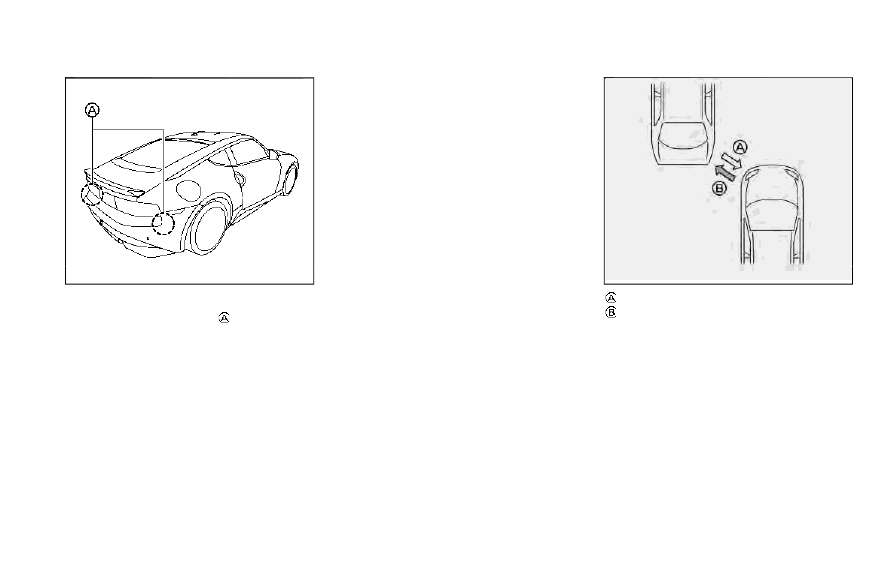Nissan Z (2023 year). Manual in english - page 14

WAF1143X
SYSTEM MAINTENANCE
The two radar sensors
for the BSW
system are located near the rear bumper.
Always keep the area near the radar
sensors clean.
The radar sensors may be blocked by
temporary ambient conditions such as
splashing water, mist or fog.
The blocked condition may also be
caused by objects such as ice, frost or
dirt obstructing the radar sensors.
Check for and remove objects obstruct-
ing the area around the radar sensors.
Do not attach stickers (including trans-
parent material), install accessories or
apply additional paint near the radar
sensors.
Do not strike or damage the area around
the radar sensors.
See a NISSAN dealer or other authorized
repair shop if the area around the radar
sensors is damaged due to a collision.
Precautions on repairing the bum-
per
When repairing the bumper, take cautious
because the radar sensors are installed
on the bumper.
WBF0182X
Radar signal
Reflected signal
Mechanism of the radar sensor:
The radar sensor detects objects by
emitting a radar signal and then measur-
ing its reflection.
Starting and driving
5-41